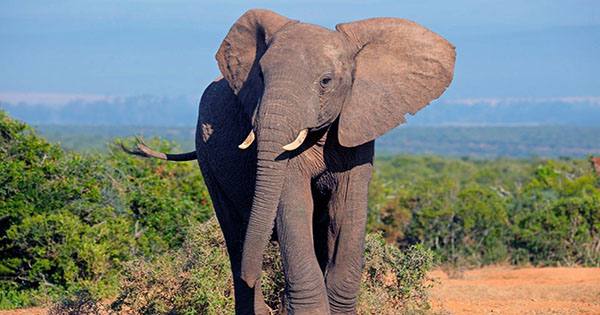Finding an elephant in Europe outside of zoos and safari parks is likely to be difficult. They’re intelligent, but they’re not out buying groceries or going to the opera. But if we could travel back in time to the Pleistocene epoch, we’d see communities of them all across the continent, from dwarf elephants to mammoths – and straight-tusked elephants roaming the length and breadth of Europe and Asia, as fossilized footprints of an ancient elephant show.
The 34 sets of ancient footprints analyzed in a newspaper published in the journal Scientific Reports by geologist and paleobiologist Dr. Carlos Neto de Carvalho and his co-authors represent only a few weeks or so of history, but they give us an exciting and kind of adorable idea of what life was like for these now-extinct titans. “It is surprising the existence of extremely little elephant tracks and trackways, sometimes in very close range or parallel to the ones of huge size elephants, among thousands of footprints, largely from large herbivores,” Carvalho told IFLScience.
“Such little tracks could only be made by newborn elephants or calves roaming around their moms when they were days or weeks old.”

African forest elephants are known to set up “nurseries” for their progeny even today, according to Carvalho, and with a lake surrounded by vegetation and sand dunes, the habitat would have been ideal for looking after youngsters too small to travel for food. straight-tusked elephants would have taken use of the habitat in the same way as their closest living cousins do now, according to Carvalho.
Carvalho told IFLScience, “There’s no doubt the tiny and well-preserved elephant tracks are remarkable proof of newborn straight-tusked elephants.” “This is extremely rare evidence all throughout the world.” Unfortunately, the euphoria was short-lived. straight-tusked elephants may have cut an imposing figure – at up to 4.5 meters (15 feet) in height and with tusks more than 2 meters (6.5 feet) long sticking straight out of their mouths, they were even larger than woolly mammoths – but their babies were easy prey for hunters, and local Neanderthals were “well aware” of when the elephants would be vulnerable, according to the research team.
“We found footprints and a trackway of Neandertals in close proximity to the newborn prints,” Carvalho told IFLscience. “We know that Neandertals lived or visited coastal locations in order to improve their meals… they were there at the correct time with the sole intent of obtaining a fat-rich, delectable newborn elephant.” Ancient elephant tracks had already been unearthed in Europe, although they rarely include offspring as young as the ones revealed in the Matalascaas Trampled Surface.
















